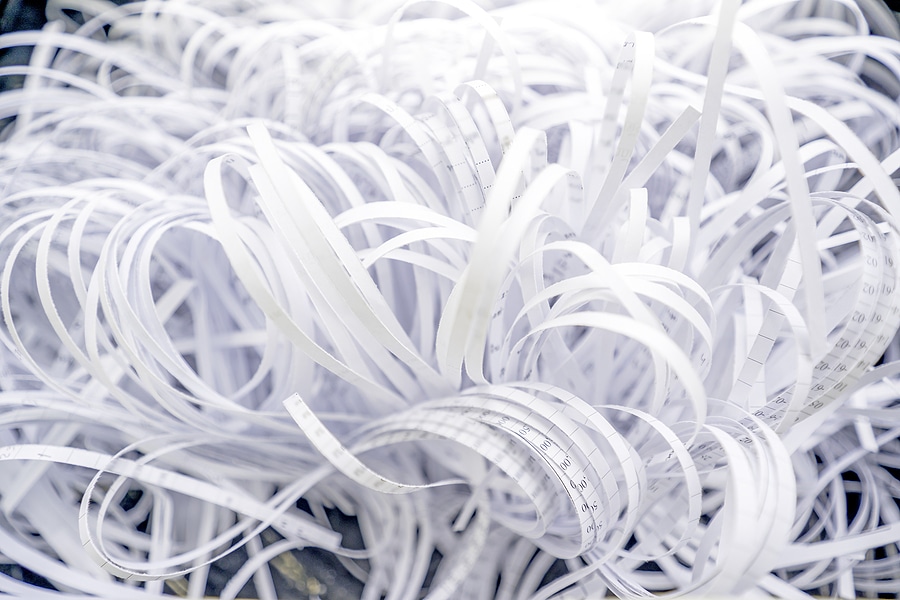Shred All: Is it Better than Selective Shredding

Document shredding is an essential part of ongoing business operations. Not only is it wise to create a clutter-free environment for employees, but following a regular shredding schedule frees up space that might otherwise be used for storage, or alternately, saves you money on off-site records storage.
Most importantly, keeping up with document shredding helps to protect your business against data leakage that could lead to breaches, identity theft, and other undesirable outcomes. Your North or South Dakota company has a legal obligation to protect sensitive consumer data collected in the course of business operations, and naturally, you also want to keep business secrets safe. Shredding documents is just one step in this process.
Of course, you don’t necessarily have to shred everything – just the documents that contain sensitive date. Is it better to adopt a shred-all policy that treats every piece of paper equally, or does it make sense to create a selective shredding policy?
Benefits of Selective Shredding
In business, choices often come down to time or money. Saving one means spending more on the other. If you’re keen to save every penny, selective shredding could be the more appealing option. Just think about the amount of paper your business generates daily. It’s easy to see that sending all of it versus half of it to your shredding partner, for example, could end up saving you a ton on shredding costs.
Of course, there are some potential drawbacks to this strategy. For starters, you have to train employees to separate out the documents that need to be shredded from those that can go in the recycling bin. This takes time, as does sorting documents based on the information they contain. In addition, there’s always the possibility that mistakes could happen, leading to confidential data falling into the wrong hands.
According to the IBM/Ponemon annual Cost of Data Breach Report 2020, the average cost of a data breach currently stands at $3.86 million. Between penalties, lawsuits, and loss of reputation and revenue, data breaches can cost a pretty penny. It’s always best to weigh the potential benefits and risks before you make a decision about how to manage your data security policies.
While it’s possible that you could end up spending slightly more out-of-pocket when you adopt a shred-all policy, there are some benefits to be gained from shredding every document your business generates. For one thing, it’s easy. Employees simply throw all paper into a secure bin for shredding, saving time on training and sorting documents.
In addition, this definitive and secure option significantly reduces the risk for mix-ups that put confidential data at risk of theft. You never have to rely on employees to make determinations about what qualifies as confidential when every piece of paper goes into the shredding bin.
Your certified ITAD service provider can help you to understand the costs of selective versus shred-all data destruction so you can make the best choice for your North Dakota or South Dakota business. Contact the qualified professionals at SEAM today at 605-274-7326 (SEAM) or online to request a quote and learn more.
SEAM provides IT recycling and data destruction services including onsite shredding and hard drive wiping to South Dakota, North Dakota, Minnesota, Iowa, and Nebraska.
Schedule a pickup or contact us for more information.





